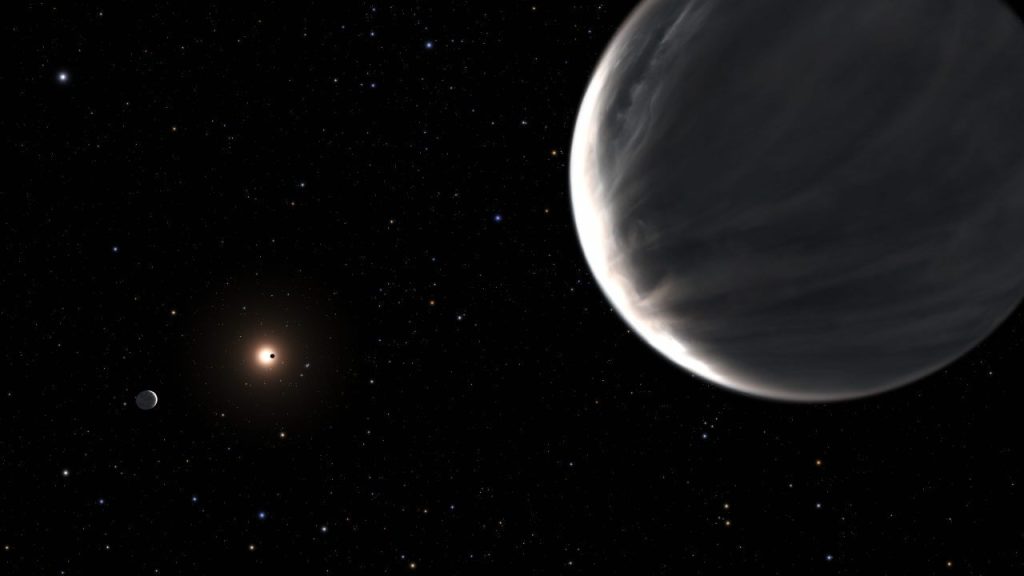[▲ رسم توضيحي لكوكب خارج المجموعة الشمسية يدور حول القزم الأحمر كبلر 138 (Credit: NASA، ESA، L. Hustak (STScI))]
A research team led by Caroline Piaulet of the University of Montreal’s Institute for Exoplanet Research (iREx) has discovered new information about exoplanets orbiting the red dwarf Kepler-138, about 218 light-years away in the constellation Lyra. Published search results.
In 2014, Kepler-138 reported the discovery of three exoplanets, Kepler-138b, Kepler-138c, and Kepler-138d. This time, the research team analyzed the observation data of the Hubble and Kepler space telescopes, and found that Kepler-138c and Kepler-138d have a radius of about 1.51 times that of Earth, Kepler-138c’s mass is about 2.3 times that of Earth. Earth, Kepler-138d is said to be about 2.1 times the size of Earth, and it turns out to be a very similar planet, almost like a twin.
In addition, it was shown that Kepler-138c and Kepler-138d may contain up to half the volume of material that is “heavy than hydrogen and helium and lighter than rock.” The research team believes that the two planets are likely oceanic planets with deep, vast oceans covering the surface, because the most common candidate for matter that meets this condition is ‘water’. It is very likely that the atmospheric temperature of Kepler-138d, far from the main star, is higher than the boiling point of water.) It is believed to be present.

[▲Cross-sectionofEarth(left)andKepler-138d(right)Imagesource:BenoitGougeon(UniversityofMontreal))Kepler-138dmaybecoveredbyoceansatadepthofapproximately2000km[▲مقطععرضيللأرض(يسار)وKepler-138d(يمين)مصدرالصورةBenoitGougeon(جامعةمونتريال))قدتغطيالمحيطاتكبلر138dعلىعمق2000كيلومترتقريبًا
Study co-author José Manuel Almenara from the University of Grenoble Alpes commented that the results confirm the great diversity of exoplanets that could be the result of different processes of formation and evolution. The research team also indicates that there may be another undiscovered exoplanet orbiting Kepler-138.
Regarding oceanic planets outside the solar system, another research team at the University of Montreal also reports the discovery of “TOI-1452 b” as a promising candidate. However, observations of Kepler-138c, Kepler-138d, and TOI-1452 b so far have not actually detected water, and expectations are high for additional observations by the James Webb Space Telescope.
Source
- Image credit: NASA, ESA, L. Hustak (STScI), Benoit Gougeon (University of Montreal)
- University of Montreal – Astronomers at the University of Montreal found that two exoplanets may be mostly watery
- STScI Two exoplanets may be mostly watery, NASA’s Hubble and Spitzer have discovered
- European Space Agency/Hubble Hubble helps discover a new type of planet that is largely made of water
- Piaulet et al. Evidence for a rich volatile composition for a planet with a radius of 1.5 Earths
Text / Takehiro Matsumura

“Travel maven. Beer expert. Subtly charming alcohol fan. Internet junkie. Avid bacon scholar.”








More Stories
The ranking of the best survival horror games selected by the IGN US editorial team has been released! Resident Evil RE:2 ranked first
Enjoy a hot cigarette while looking at whales and tropical fish under the sea ⁉︎ “Ploom Dive” is an amazing spatial video experience using Apple Vision Pro
Apple Watch now supports sleep apnea, watchOS 11 released – Impress Watch